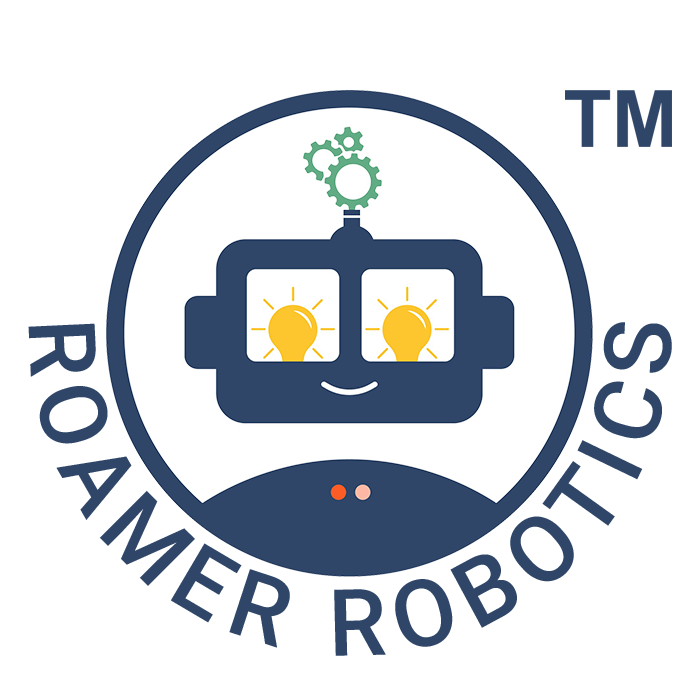In 1993, a quietly revolutionary initiative took place in Kent, England — one that would shape the trajectory of educational robotics for decades to come. The Special Educational Robotics Project (SERP), led by Mike Blamires and a team of dedicated special school teachers, set out to explore a bold question: Could a floor robot be adapted to support every learner, regardless of ability?
The answer, as it turned out, was both yes — and not yet.
The Vision: Inclusion Through Innovation
SERP was never about creating a robot for some children. It was about designing an inclusive tool — one that could differentiate learning tasks, respond to varied sensory and physical needs, and serve as a genuine catalyst for engagement. At the heart of the project was the Roamer: a cheerful, programmable floor robot already popular in mainstream classrooms.
But in SERP’s hands, Roamer became a test case for something deeper — how technology could close the gap between learners.
As the original report stated:
“This project is not concerned with special activities for a separated group of children. It attempts to find ways in which the Roamer could become a unique learning resource for all children.”
The Challenges: Friction at the Frontier
The SERP report, once embargoed for over 20 years, reads today like a blueprint for inclusive edtech — highlighting both real success and stubborn stumbling blocks.
Children with profound and multiple learning difficulties responded to Roamer with delight, fascination, and a level of engagement that surprised even seasoned educators. For non-verbal pupils, it encouraged vocalisation. For those struggling with sequencing, it became a tactile, mobile memory aid. For pupils with autism, it provided structured, visual cause-and-effect — and at times, a breakthrough in peer interaction.
Yet the report was also clear-eyed. Roamer’s limited memory, rigid keyboard, quiet beeps, and lack of sensory integration were frustrating in special needs settings. Teachers needed time, training, and often physical customisation to make it work. As one contributor put it:
“In its present form Roamer can be very frustrating to use…”
The Legacy: Foundations for Future Robots
Despite its imperfections, Roamer offered something few technologies did: mobility, tangibility, and charm. Children didn’t just program it. They anthropomorphised it. They named it. They gave it jackets. They turned it into a companion.
That emotional connection proved crucial — and has since been validated by decades of research.
Modern projects like HERO, DREAM, and Sheffield Hallam University’s robotics programmes have confirmed what SERP showed early on: robots can boost motivation, facilitate communication, and even help diagnose hidden learning strengths. The latest generation of robots now includes speech recognition, facial expression, and real-time feedback — features the 1993 team could only dream of.
But their dreams were prescient.
Many of SERP’s “wishlist” features — from modular sensors to overlay keyboards, auditory cues to external switches — are now standard in assistive robotics.
Why It Still Matters: Differentiation Done Right
One of SERP’s most important ideas remains as urgent today as it was in 1993: Differentiation is not optional. If we are serious about inclusion, educational tools — robots especially — must adapt to learners, not the other way around.
The Roamer was ahead of its time not because it worked perfectly, but because it was used thoughtfully — as a means to explore what children needed, not just what technology could offer.
The team didn’t just program robots. They reprogrammed expectations.
They asked:
- What if a robot could be voice-activated by a non-verbal child?
- What if a child with visual impairment could “feel” a robot coming?
- What if a pupil disengaged from maths could see sequences play out before them?
- What if we used the robot not to instruct — but to listen?
A New Roamer for a New Generation
Today, as we develop Roamer 3, those original insights continue to guide us.
Roamer 3 is not just a next-gen educational robot — it’s a tribute to the philosophy that powered SERP: every child deserves to be curious, creative, and in control of their learning. And that starts with tools that bend to them, not the other way around.
Informed by the research and hard-won classroom experience of those early pioneers, we’re building something bolder — a robot that is:
- Modular by design
- Inclusive by intention
- Programmable by everyone
Because inclusion isn’t a feature. It’s the future.
Looking Ahead
Educational robots are not novelties. They are bridges. And when designed well, they do more than teach coding or logic — they teach connection.
As the 1993 SERP report concluded:
“The Roamer is on a long journey to become an educational robot for all children.”
That journey continues — with gratitude for those who helped chart the first steps, and excitement for what lies ahead.

